Goldwork artist Hanny Newton found herself working on her biggest-ever commission for most of 2020. It was a goldwork forest measuring 2.5 meters tall, and it contained about a kilogram of copper thread and over 500 hours of stitching.
She wondered if months of solid stitching would test her love of goldwork, but she passed her own test with flying colours. It also encouraged her to push further within her own practice. But how does an artist top such exquisite excellence?
Self-induced pressure to create the ‘next big thing’ was on, and it became somewhat overwhelming. Hanny wasn’t sure how to move forward.
Ironically, through a series of sampling efforts, Hanny decided she needed to go backward to go forward. She needed to let the medium take centre stage, and then she, as the artist, would go along for the ride.
This is a remarkable story of reacquainting oneself with a medium, despite years of prior professional work with that medium. And it ends with a lesson for us all: possibilities rest in the simple and small—not the next big thing.
Hanny studied goldwork embroidery at the Royal School of Needlework and Falmouth University. Her practice focuses on finding a contemporary approach to the ancient art form. She has taught nationally and internationally, including The British Museum, Kings College London, National Trust property and the Australian Design Centre in Sydney.
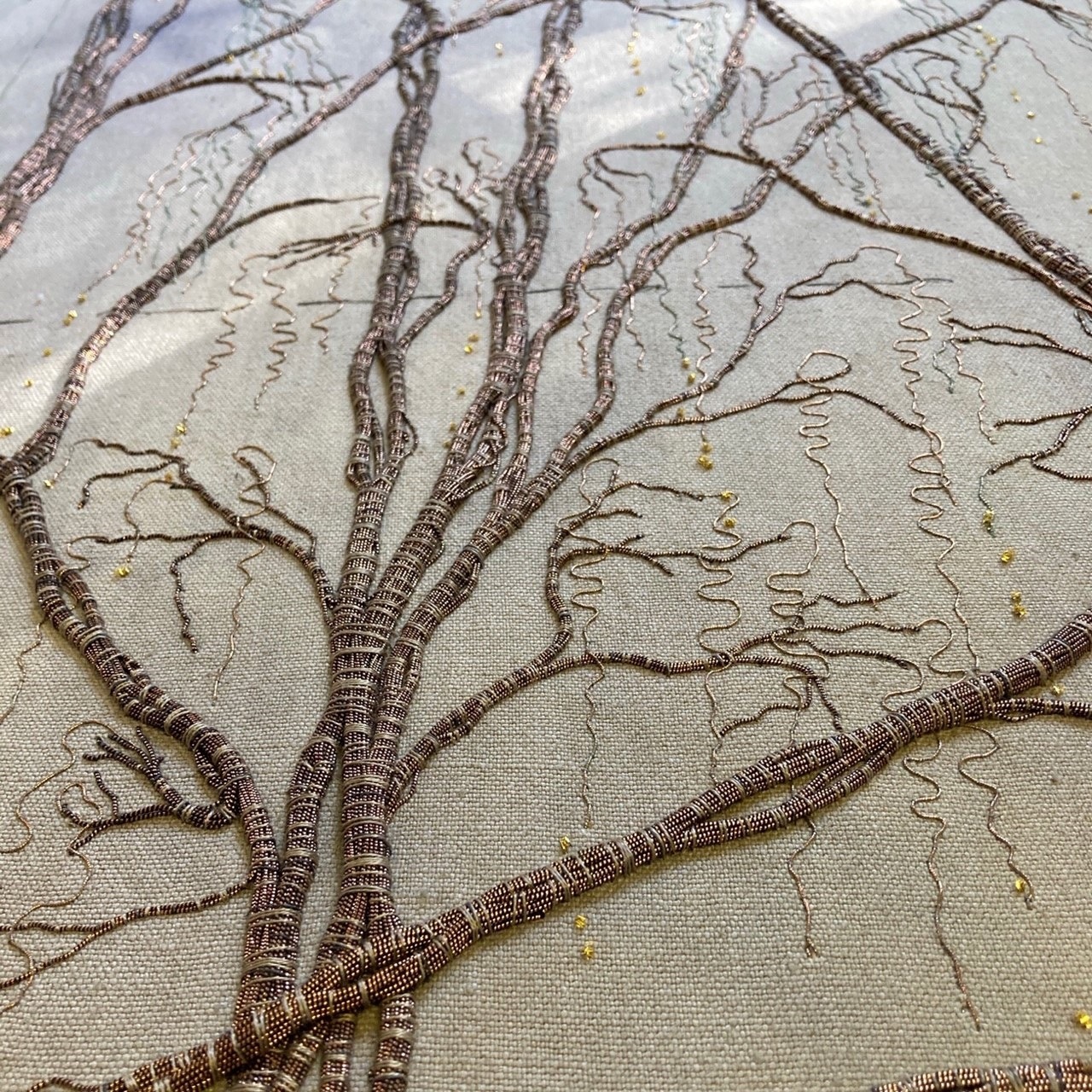
Connecting with admired artists
TextileArtist.org: How did the idea for your “Emergent Embroidery” series come about?
Hanny Newton: Life had become pretty full pre-pandemic with teaching and other projects, and despite my best intentions, I had not been able to dedicate focus to my own work. But the commission and the solitude brought about by the pandemic changed that.
I resolved to put my own practice first once again. And the opportunity to pause and think so much about my practice while still getting to stitch and work on something I felt so passionately about was really special.
I thought a lot about where I wanted my work to go. What really mattered to me was the craft of goldwork and how it could fit into how I wanted to express myself through art. I prepared for a fair amount of soul searching to be involved, as well.
While working on the commission, I had came across a podcast about the artist Agnes Martin. The name seemed vaguely familiar, and something compelled me to learn more.
I am so drawn to the way Martin uses seemingly simple marks (of course, executed with a high level of skill) to create something that is more than the sum of its parts. The methodical nature of her multiplying lines really resonates with me as an embroiderer.
I feel drawn to and humbled by the pared back beauty of her work—the beautiful juxtaposition of the understated boldness and no specific focal point. Her paintings evoke emotions beyond visual representation, seemingly capturing nothing and everything at once.
Her work inspired me to move beyond feeling my embroidery had to ‘be’ something, and to instead find a way that it could just BE. And this notion became my mission with my new body of work, even though I didn’t have a full impression of what form it would take.
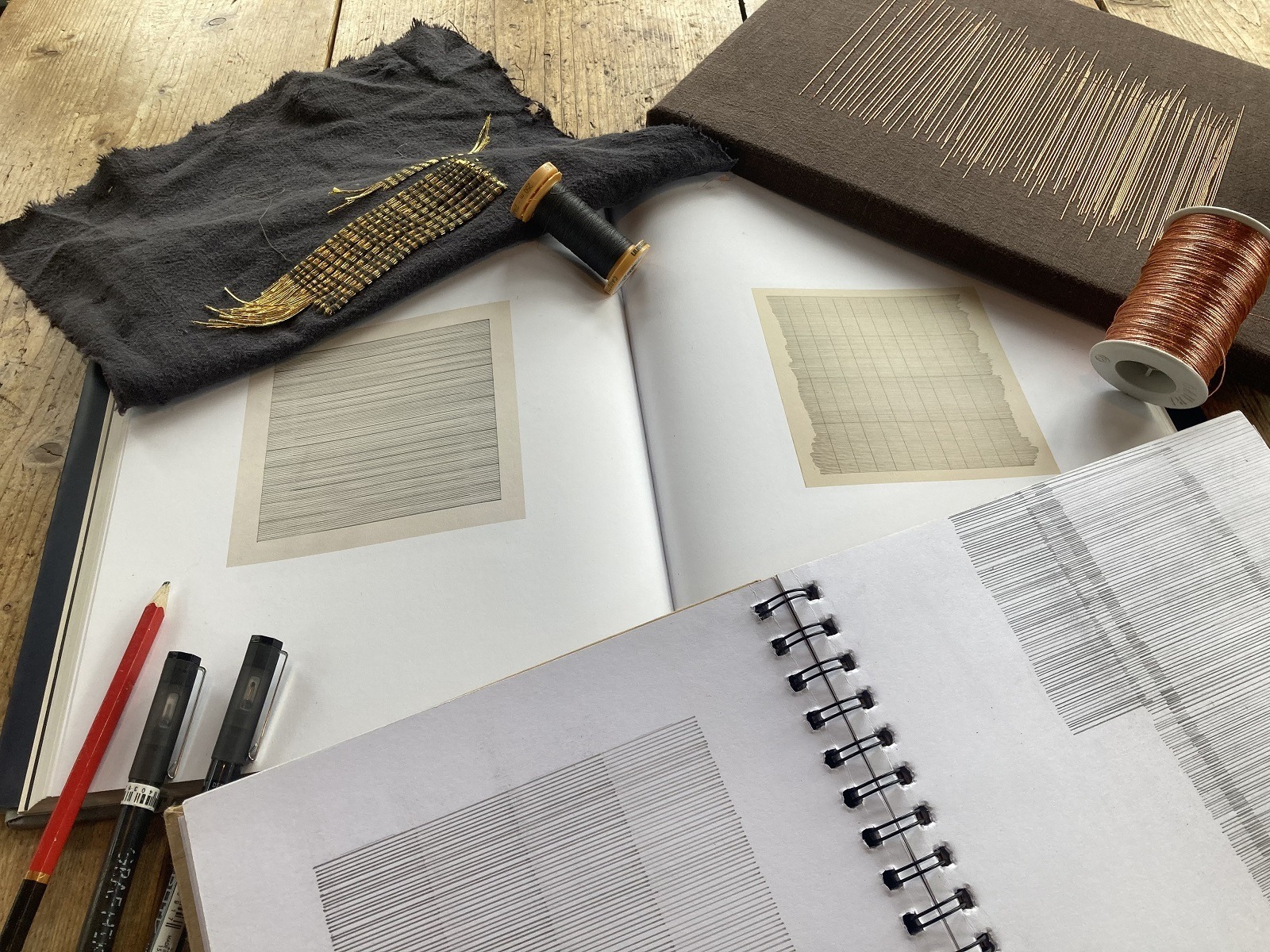
What research did you do before you started to make?
To help me get back into my own practice, over the coming months, I developed what the author Matt Haig describes as ‘a routine baggy enough to live in.’ I had no set times but enough structure that helped me immerse myself back into my practice.
The first task of each day (and after a good, strong coffee!) was to read at least a couple of pages about artists. This has become a lovely way to start my day. Making art is a pretty solitary act, so spending some moments each morning delving into the work and minds of artists that inspire me really sets me up for the day and helps me feel connected to the outside world.
Over the last few months, I have read books on Agnes Martin, Anni Albers, Olgar de Amaral and Lenore Tawney. Having this daily discipline has helped me start to gain a deeper understanding of the context in which I make art. And that’s something I must admit I didn’t make time for in such a structured way in the past.
Reading about how these strong women carved their own paths and dedicated their lives to creating art which came from their hearts and pushed their chosen mediums (with some totally rethinking ‘traditional’ craft) is so exciting. It makes me feel like anything is possible if I keep listening to what feels true to me and set aside worries about what anyone else may think about my art.
They have reminded me how belief, conviction and dedication can lead you toward becoming an artist if you trust the process.
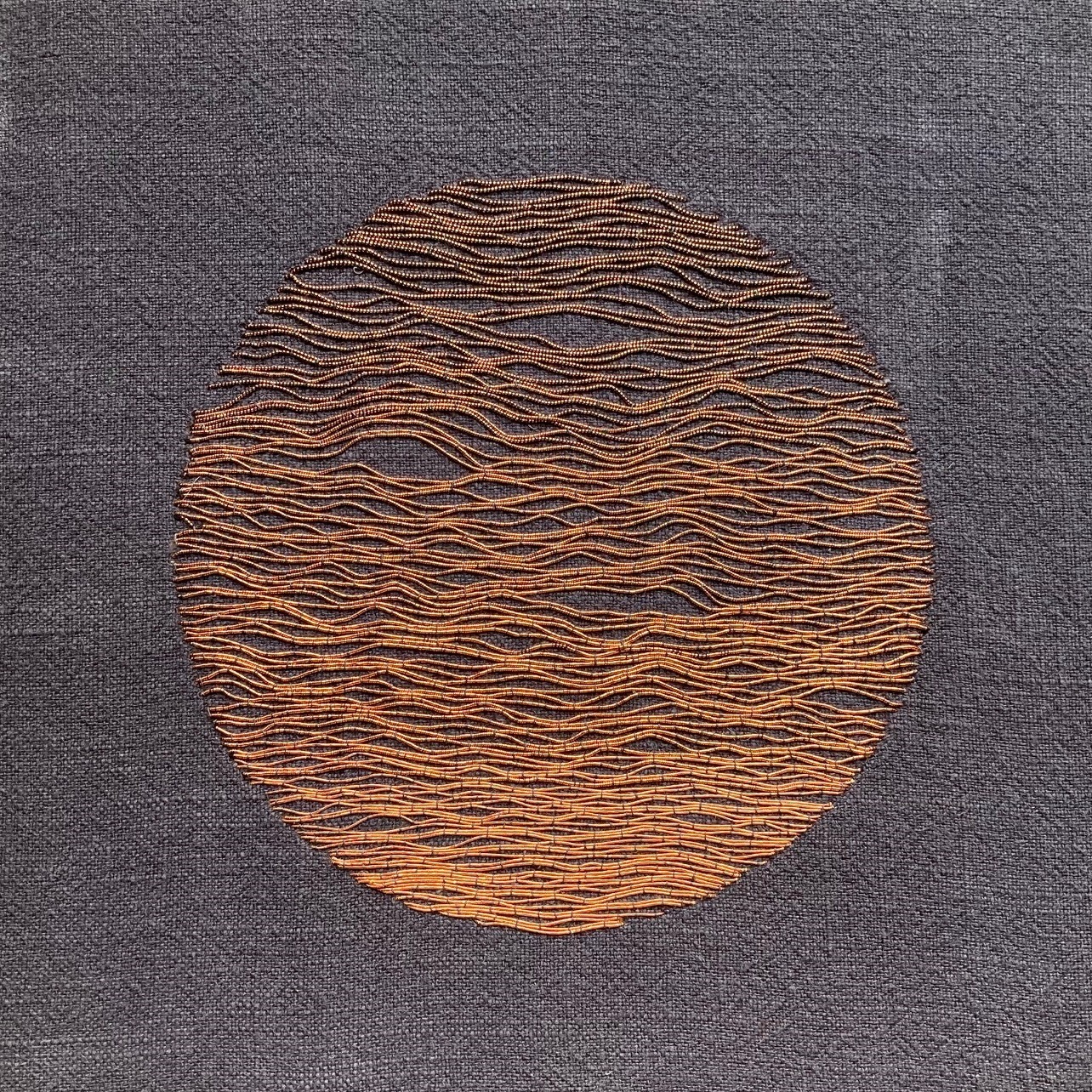
The concept of ’emergence’
Tell us about your first foray into experimenting with line
Back in Autumn, 2020, I approached the whole process as preparatory work, laying the ground for whatever came next. I could picture the ‘long game,’ and I knew where I roughly wanted to end up.
I imagined large, immersive pieces of metal embroidery that drew in the viewer. The closer one got, the more there was to see. And I could picture viewers almost breathing and being meditative.
I wanted to capture Anni Albers’ notion of art as a ‘visual resting place.’ However, I didn’t quite know how I would get there or exactly what it would look like.
So, I decided to start by picking one thread and one fabric (copper passing through a dark grey linen) and working within a circle to see what would happen. I literally went the flow of the metal thread. This first piece led to a series of five additional pieces, each with its own line density and sense of flow.
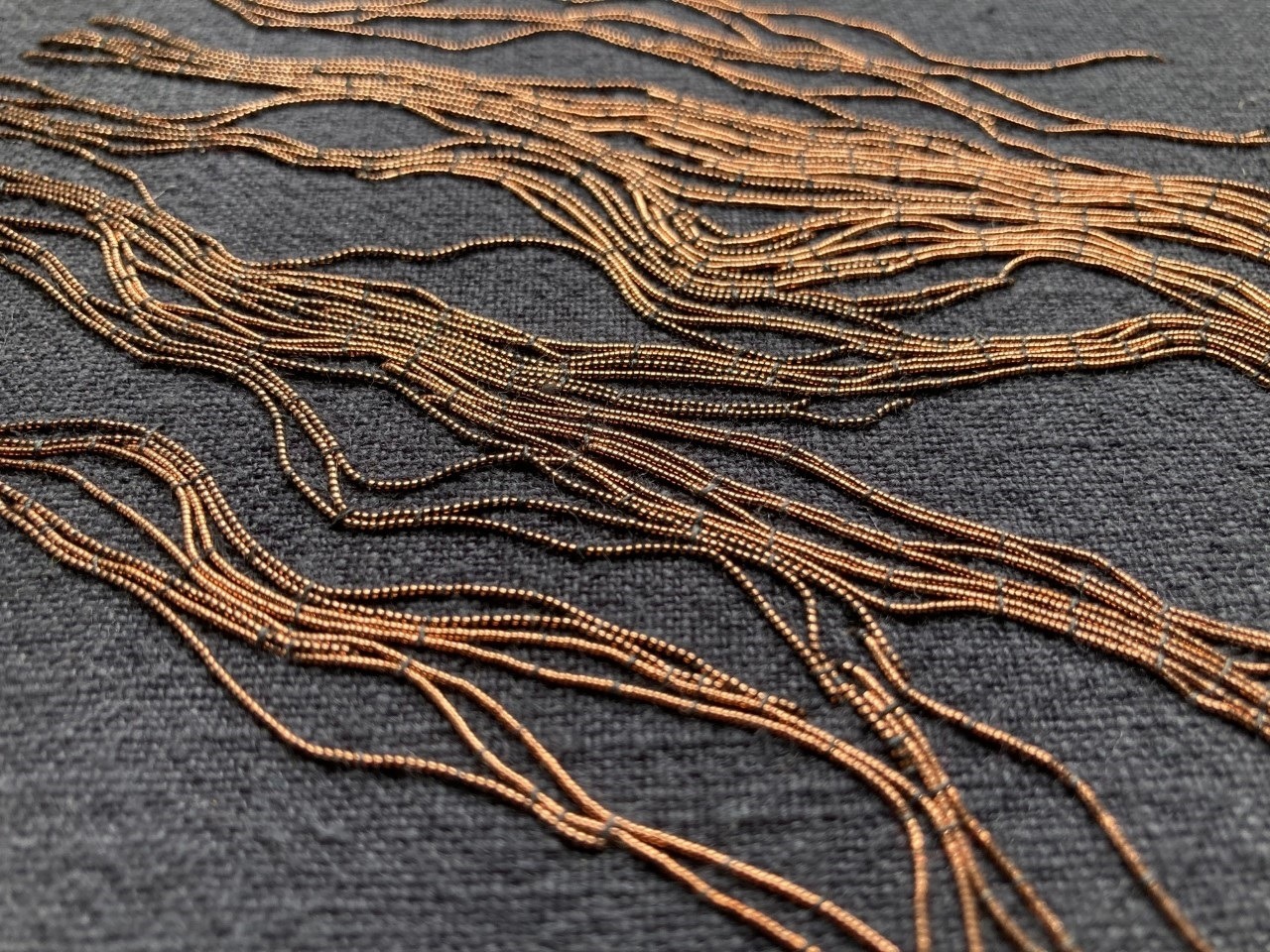
Ultimately, though, they felt more like sketchbook ‘pages’ than finished works. Something was missing.
Writing this almost half a year on, I now see I hadn’t really clarified what I wanted to achieve with that work. I was missing a strong motive or ‘rule’ to follow. Even though they had a nice flow to them, they essentially felt like I was taking a line for a walk.
Still, by working on those pieces, I gained an understanding that line quality is important to me. I knew I wanted this work to be about line itself. I love the immediacy of line, and I love the idea of creating work that explores the a line’s inherent qualities.
A thread—metal or other—is simply a line. And rather than using a gold thread to depict something in a pictorial sense, I wanted to expose the thread for the line that it is. To strip back my technique where necessary and lay it bare.
I decided to next focus on drawing. I find drawing to be freeing. Perhaps it’s the more spontaneous nature of a pen over a needle and thread.
Or maybe as an embroiderer, I feel more pressure when it comes to stitch. I place more expectation on ‘doing good work’ in a medium that has become a part of my identity. Putting down embroidery and picking up a pen allowed me to think more about line.
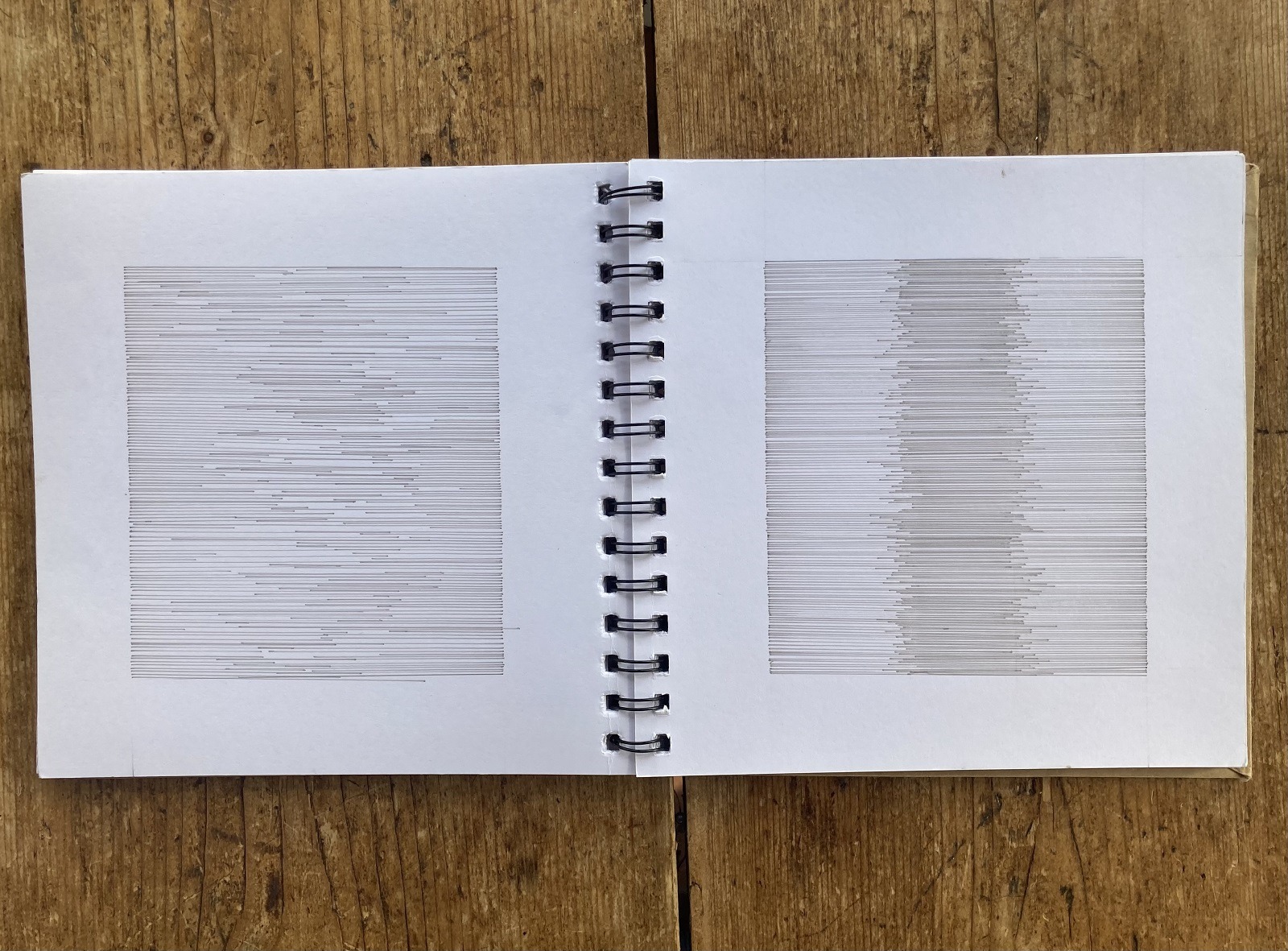
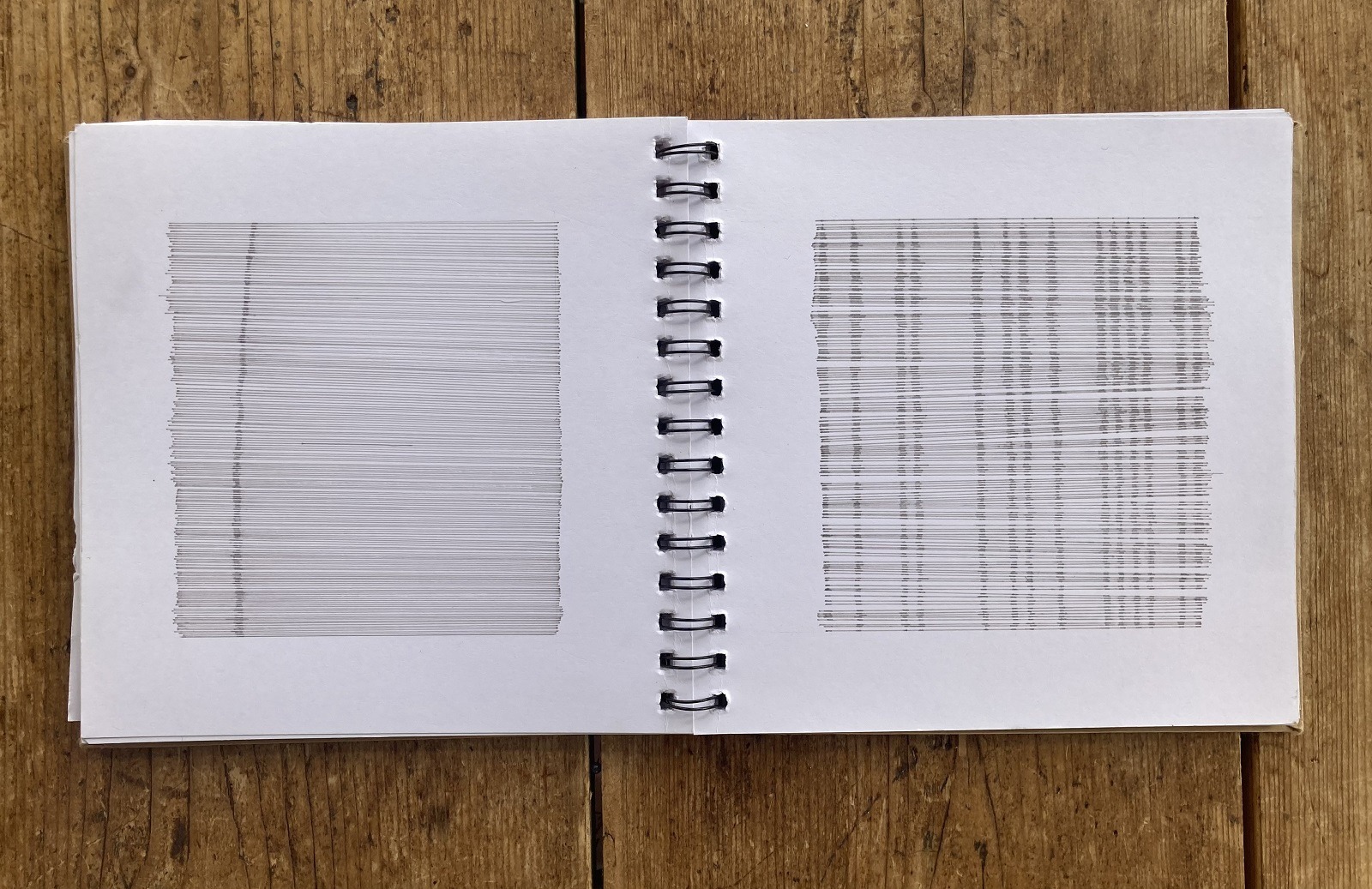
I filled a whole sketchbook with drawings, each one exploring the seemingly endless possibilities of using a ruler and grey pen on white paper. The confinement was paradoxically freeing. It allowed me to delve deeper into what was in front of me, rather than becoming overwhelmed by unlimited choices about colour, material, line quality, etc.
I then decided to push out of my comfort zone. As someone who has always been drawn toward expressive, fluid lines in my embroidery, I translated the ruled-line pen drawings back into stitch.
To do this, I developed a method of stretching my metal threads taut across the canvas, making sleek, straight lines. These threads could then be multiplied to create works which explore density of thread and effects of multiple lines interacting with light.
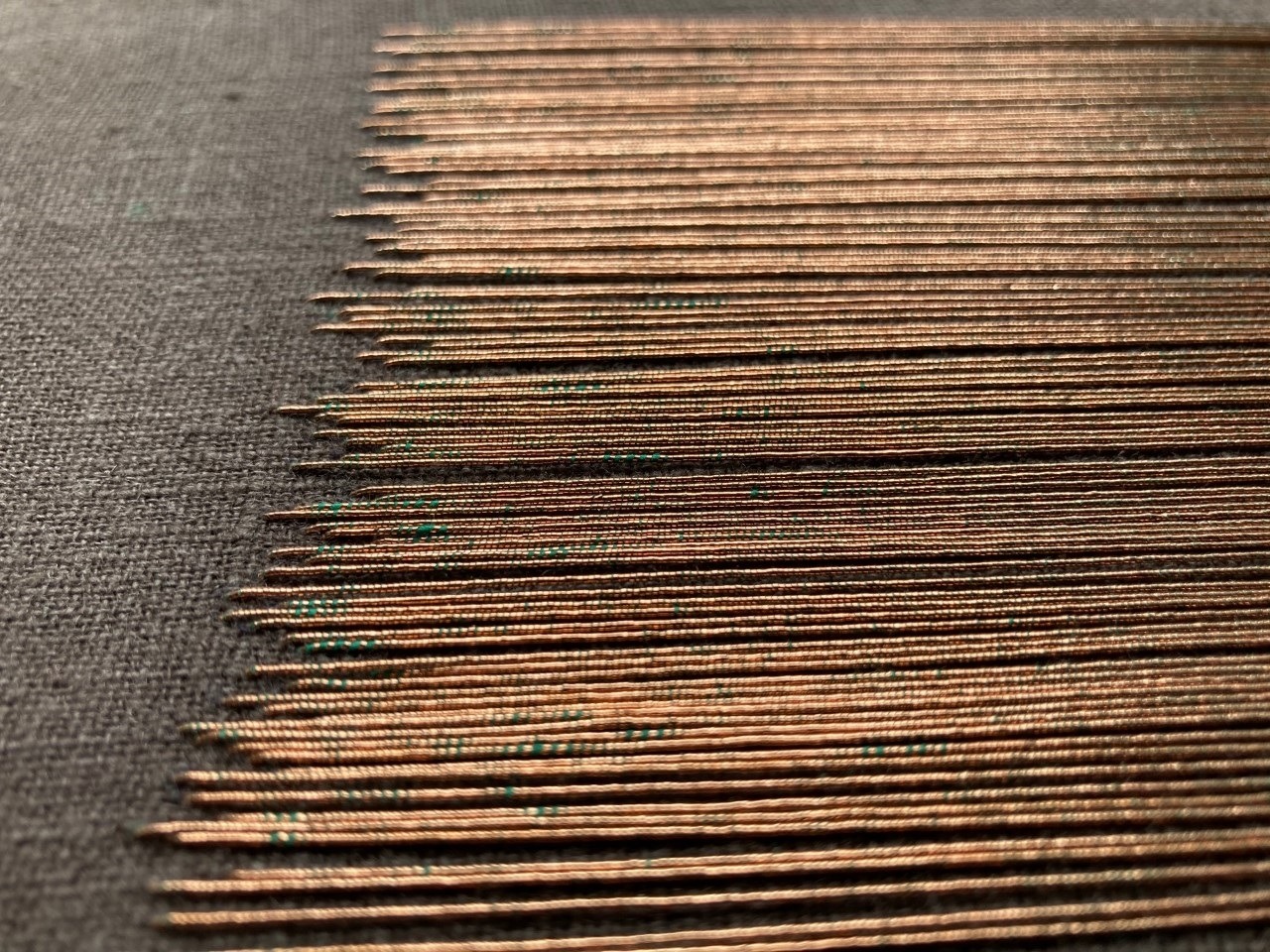
I found myself drawn to exploring the simplicity of metal on fabric, putting aside conventional goldwork techniques for the time being.
I then realised I wanted to only use couching stitches in a very intentional way, rather than becoming a by-product of construction as they had felt in my initial 5-piece series. I enjoyed pushing my practice in this way. It felt so out of my comfort zone and right on the edge of what I felt I could still describe as goldwork: thread, simply secured on the back, with no stitches on the front.
Although I am happy with how that small body of work turned out, I ultimately found it to be restrictive. I found myself craving to work in a more spontaneous way, dancing with the threads and following their flow.
Perhaps I will return to it in the future. But I also realised I was feeling self-imposed pressure to pick up where I had left off over a year ago, hoping it would soon become obvious what form my work would take.
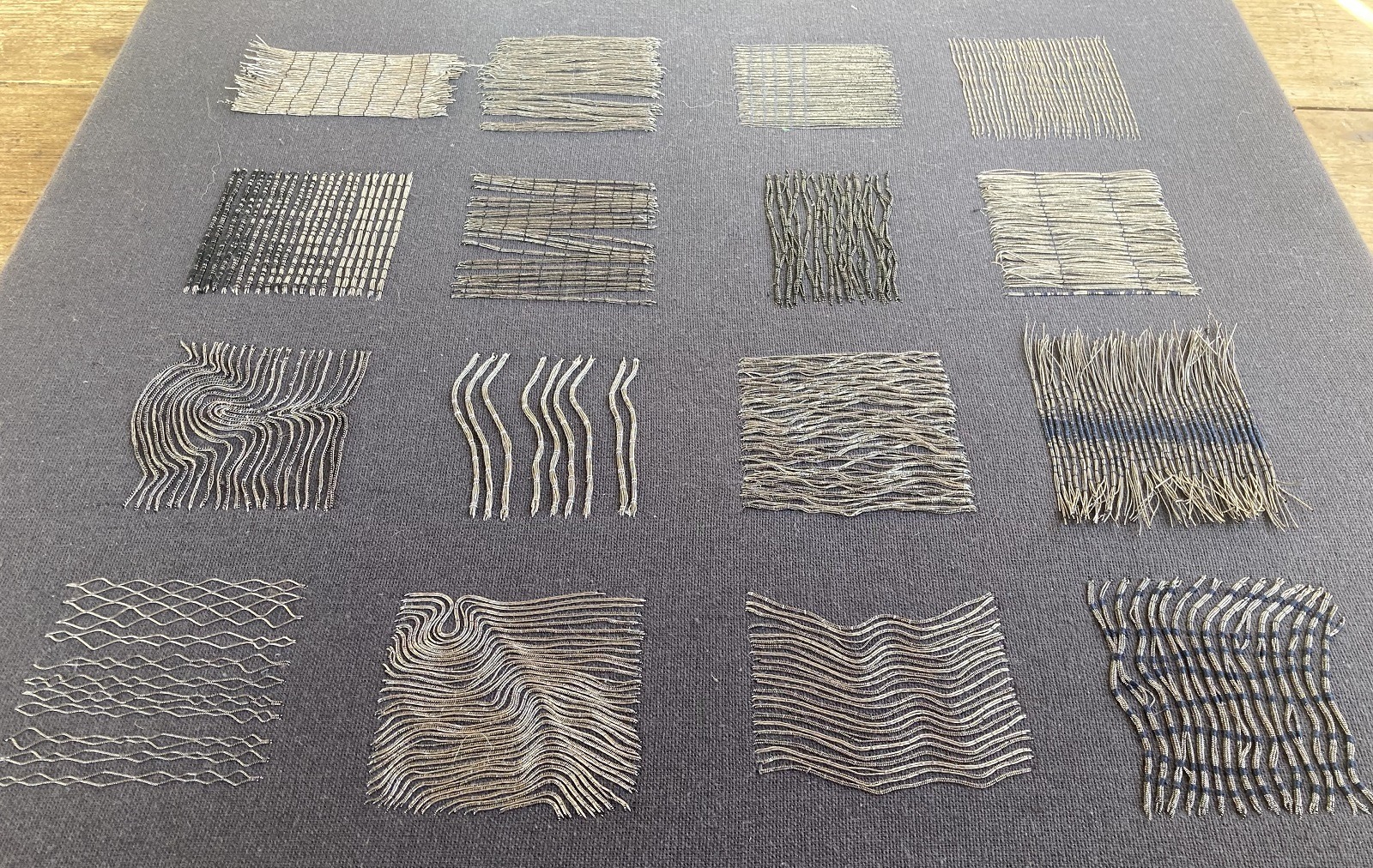
How did your exploration of line evolve from there?
Toward the end of 2020, I took stock of the last few months’ work and realised my next step forward was what would appear to be a step back. I started the new year with a new project that allowed me to put my mantra for uncertain times into practice: one thing at a time.
On the first day of 2021, I embarked on a 3-month project: create small samples, starting with 7-centimeter squares, to be completed roughly every 1-2 days. This approach was meant to remove a growing pressure to know where this was all heading and allow me to plough the depths of my chosen craft.
Shortly before embarking on this project, I had shared my sketchbook of line drawings with a biologist friend of mine who introduced me to the concept of ‘emergence’—the phenomena of individual components coming together to form something bigger than the sum of its parts.
This really resonates with me and helped me articulate something I have wanted to capture in my work and that is naturally inherent to embroidery: hundreds of stitches come together to become a larger object than one or even a few stitches could be on their own.
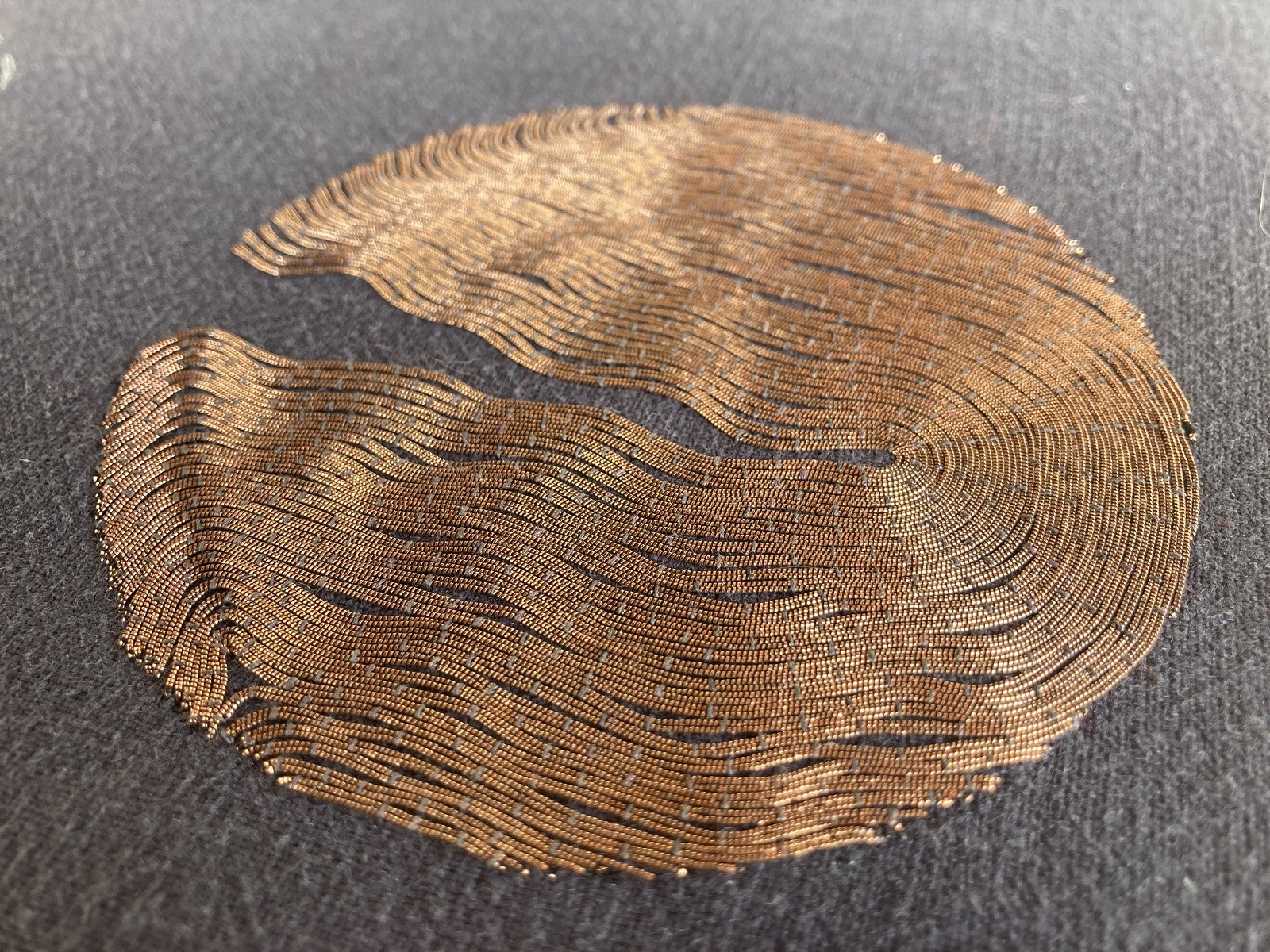
It also neatly tied in with the project. Over the three months, my samples would multiply, giving me more knowledge and inspiration for the form my work ends up taking.
During the past six weeks, I allowed the path ahead to emerge as I went along. And I allowed each piece to organically follow a rule/logic of its own and become its own ecosystem of sorts, emerging from the act of making.
I am really enjoying the process of allowing one decision in a piece to shape what happens next. Each line embraces my own imperfection, and I honour this in the following line, which allows life to be added to my work.
The concept of emergence has allowed me to trust the process more, and my art quite literally emerges. I no longer feel I have to have it all figured out.
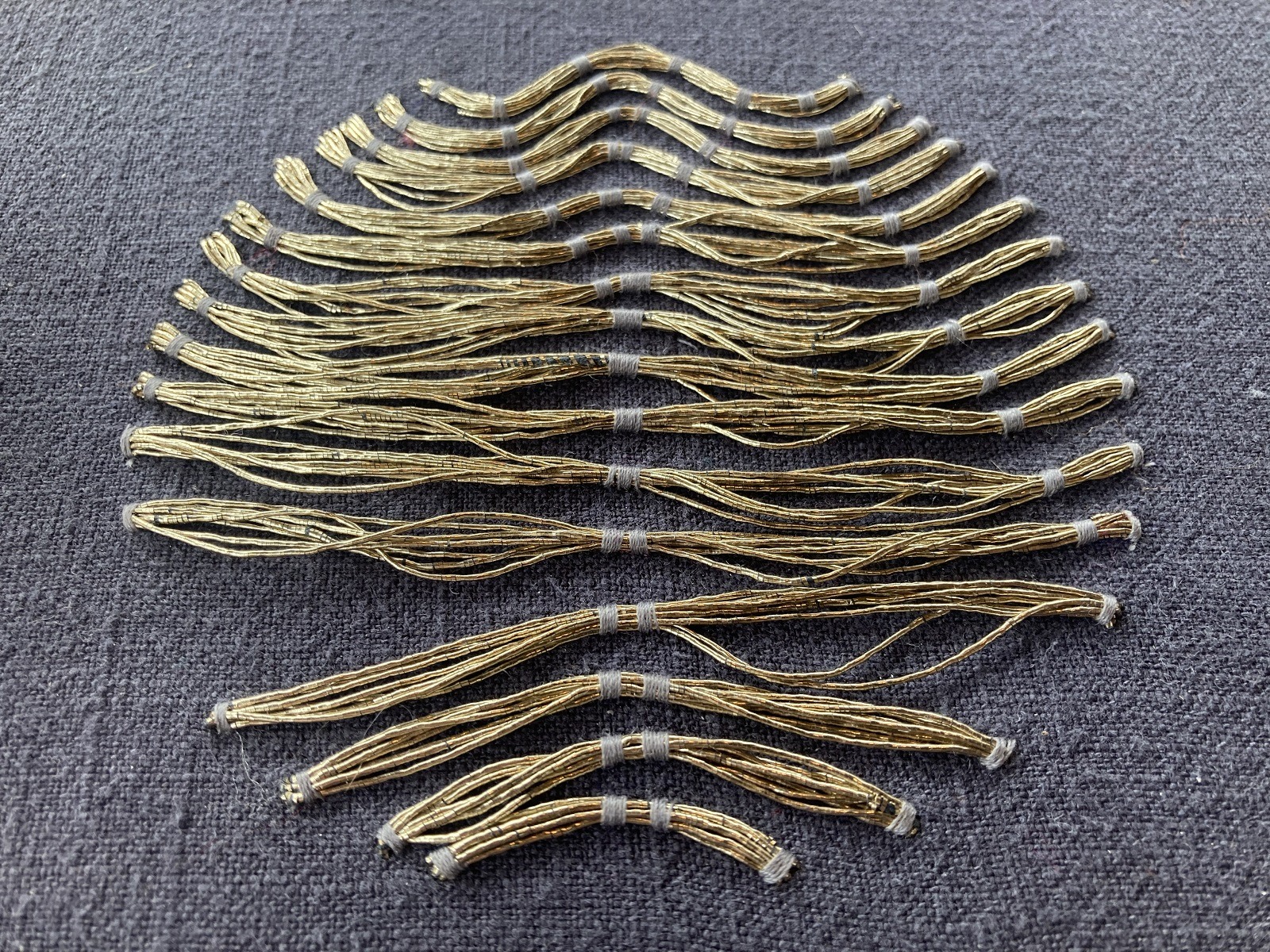
Making truthful art
What materials were used in the creation of the piece? How did you select them? Where did you source them?
As with the majority of my threads, for this body of work, I am using beautifully crafted British metal threads. They come in a variety of beautiful metals.
The craft of metal thread making itself is on the Heritage Craft Association UK’s Red List, currently recognised as an endangered craft.
I predominantly embroider with metal threads from the UK’s last two remaining metal thread makers: Benton and Jonson and Golden Threads. I hope my support of this incredible craft contributes in some way of keeping it alive.
I love to work on earthy, natural fabrics, especially linen. Throughout this project, I have used a range of greys and browns.
I really enjoy working on lots of different backgrounds, enjoying subtle changes in tone, warmth and texture that different fabrics can bring.
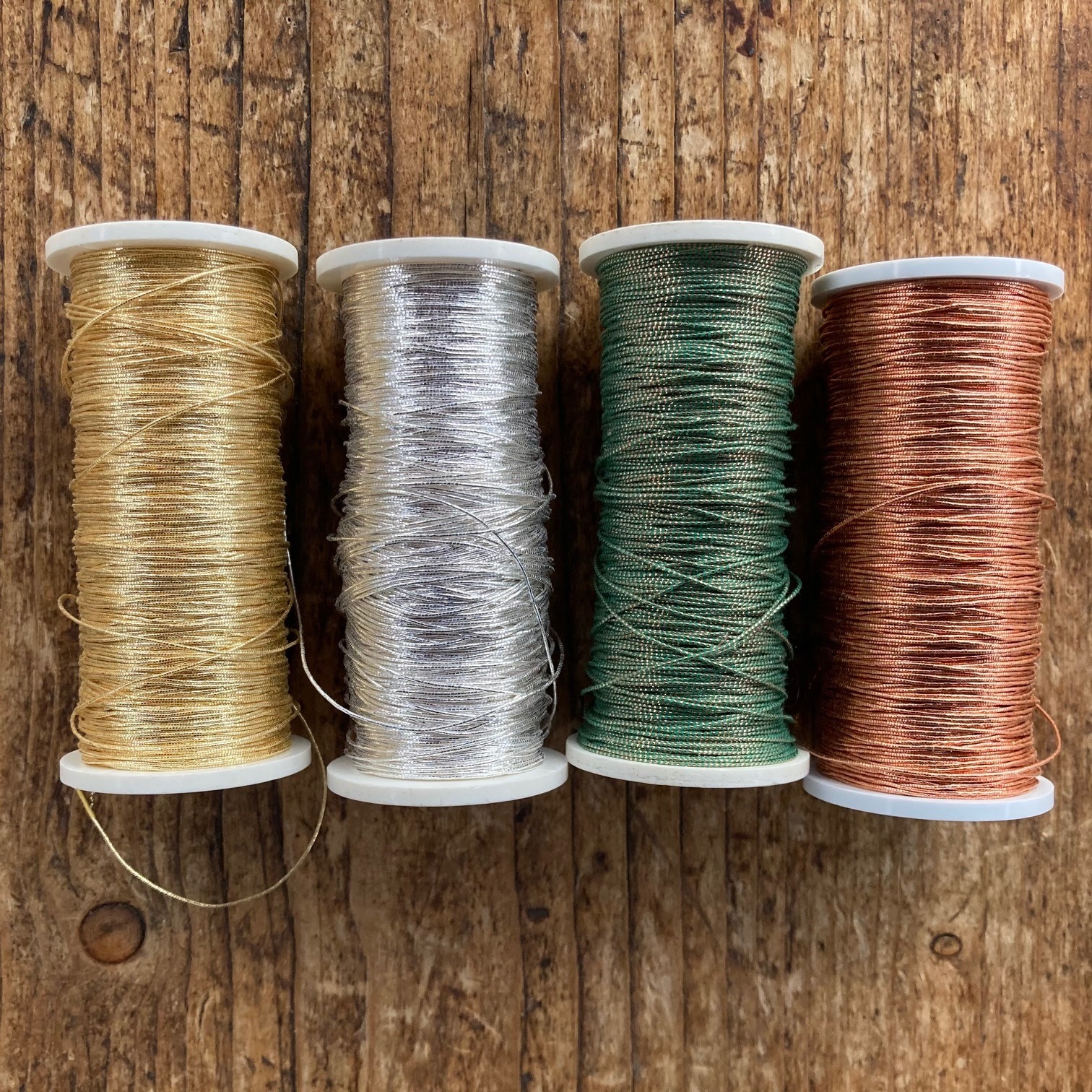
What equipment did you use in the creation of the piece and how was it used?
One of the things I love about embroidery is the simplicity of equipment and how accessible this makes the craft. I use the smallest needles I can find (size 12 are my current favourites) which give me the most accuracy in my stitching. There is something nicely intimate about creating my art using such a small piece of equipment.
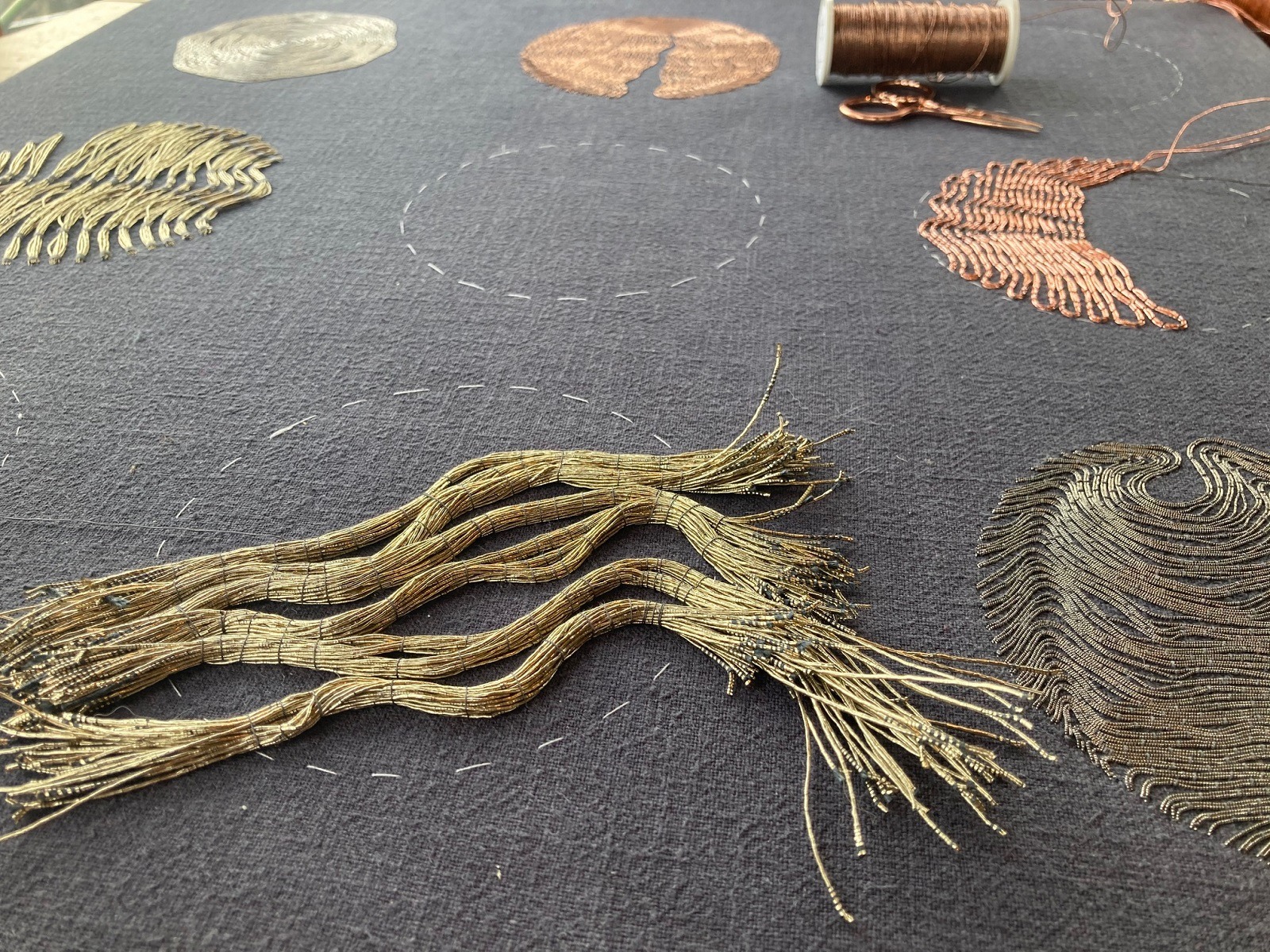
What journey has the piece been on since its creation?
This project is very much still in production at time of writing. Giving myself three months to let my ideas develop slowly and organically feels great and addresses my urge to feel I should be further along in my artistic progress.
Looking back at the first samples I created, I can see a greater sense of flow and intention to my stitching emerge—the qualities I found lacking in my initial five samples back in September. And the small square samples have helped me explore and record so many more ideas. I look forward to seeing how it progresses and to see what it becomes.
I would still love to one day end up with a big finished ‘thing,’ but I have decided not to miss the journey along the way. My main goal is to use the daily sampling process to lead me deeper into making truthful art. Maybe for me, this process is not simply about embroidery, but also how I approach life.
You can follow the progress of Hanny’s project on Instagram: @hannyembroidery
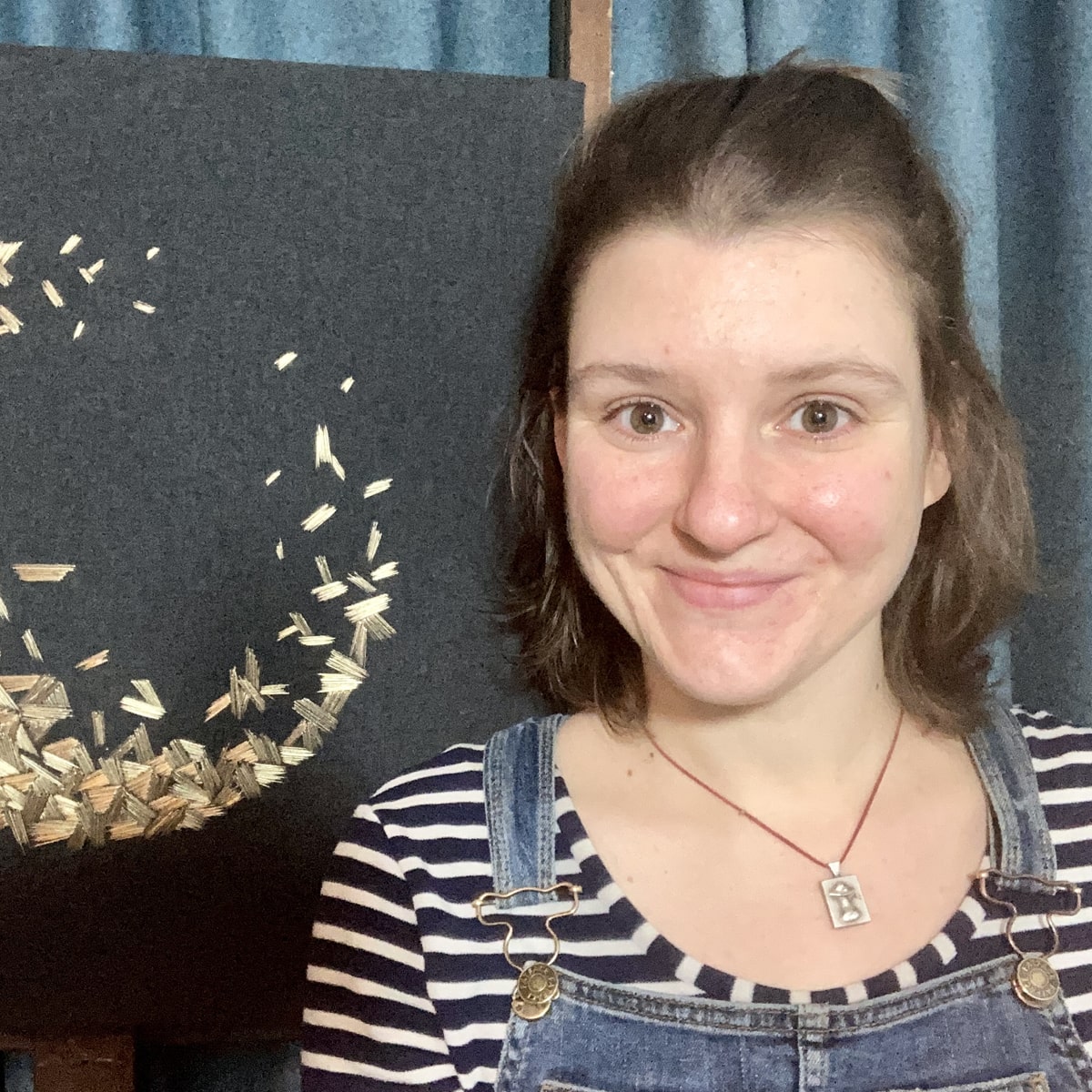
For more information visit www.hannynewton.co.uk
Hanny decided to sample on a smaller scale to explore possibilites. Have you ever done something similar in your own practice? Let us know below.
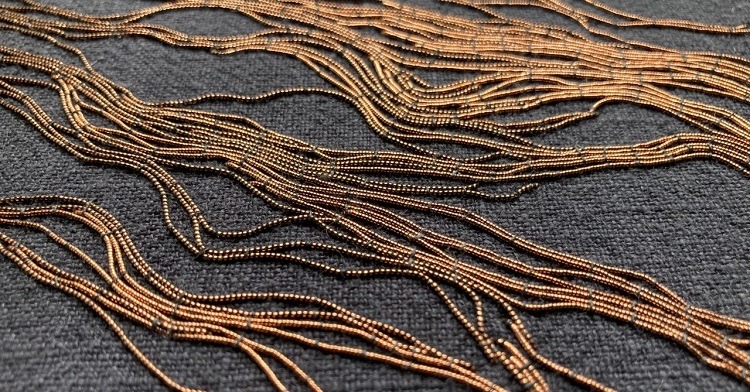
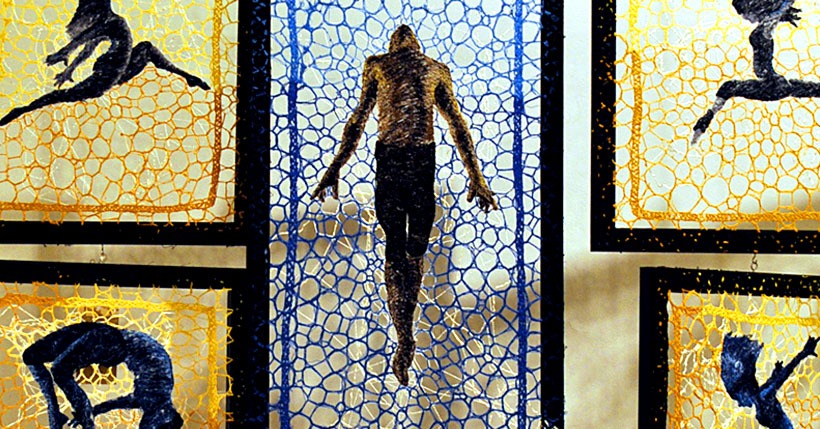
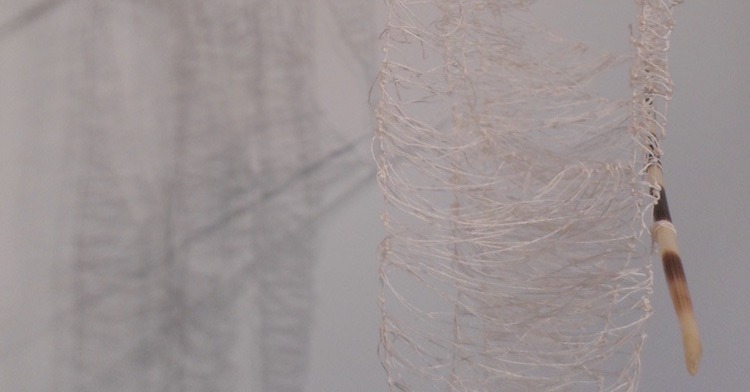
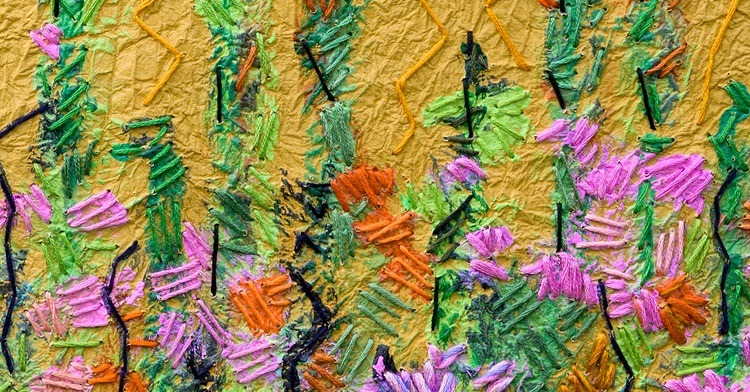
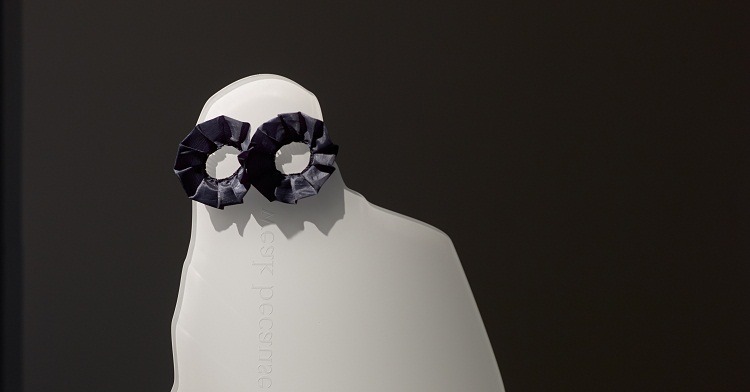
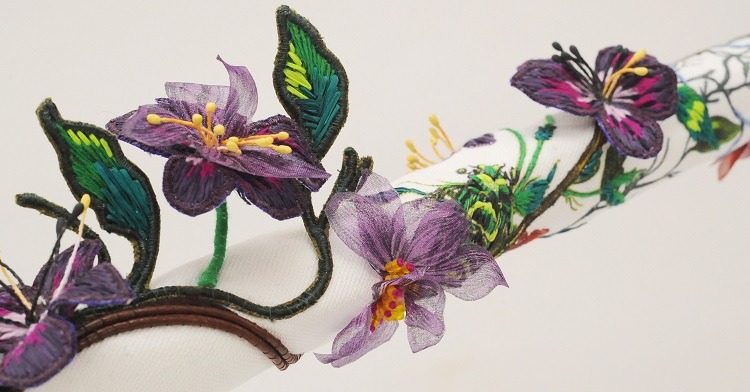
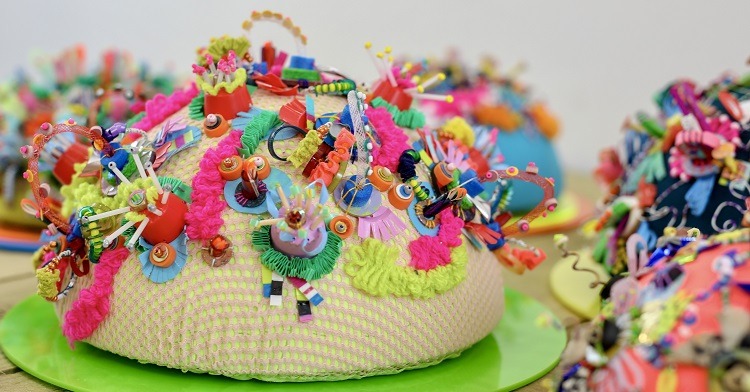
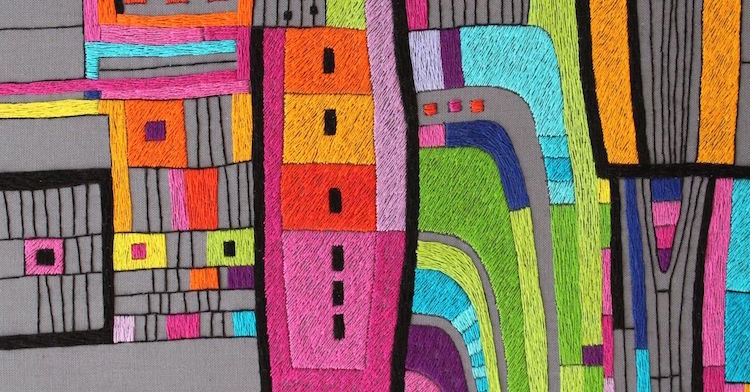
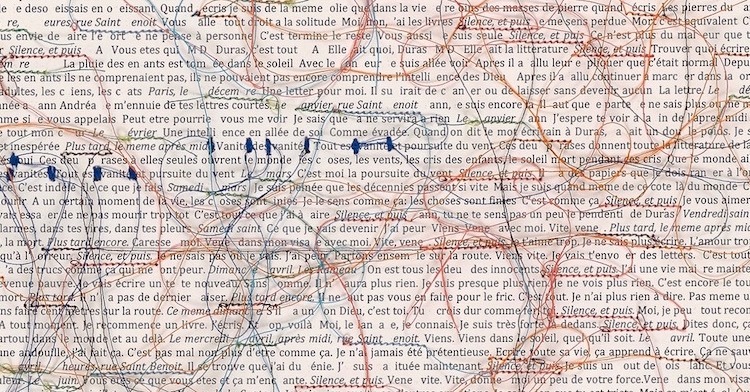
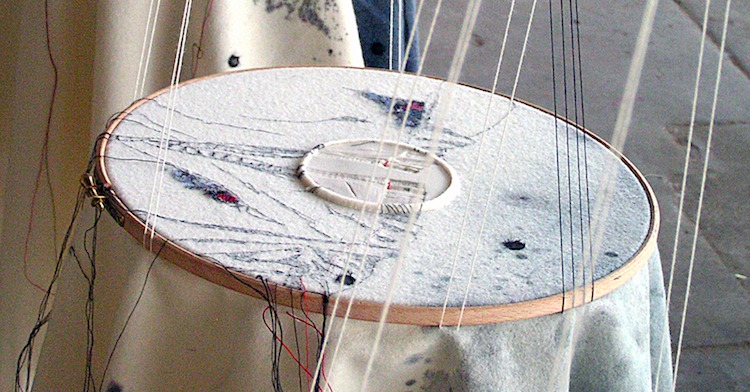
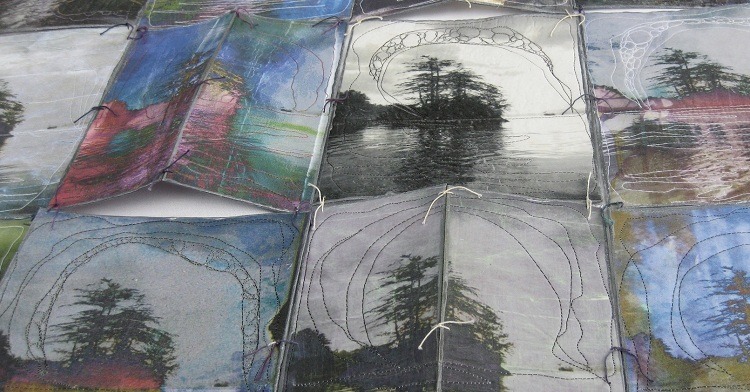
18 comments
Gayle Alexander
Very inspiring! Thank you.
Libby Queale
Thanks Hanny – really enjoyed reading all about your inspiration and processes – such wonderful work. I am at the moment reading a fabulous book about Lenore Tawney. I was very lucky to see some of her work along with Anni Albers early last year at the Chicago Institute of Art – such an inspiration!
I so very much look forward to your workshop in the Stitch Club!
Saima
I loved reading about Hanny’s commitment to her work and process, constantly balancing her quest for flow with artistic development.
hanny
Thanks so much Saima.Really enjoyed sharing my process. Hanny
Dorothy Yuki
Hanny, I love your graphic quality to your pieces. Amazing work. Thank you for sharing.
hanny
Thanks Dorothy, Great to hear it resonates! Hanny
MICHELLE AYAVORO
Thank you Hanny, really motivating and inspiring!!
Hanny
Great to hear Michelle! It’s amazing what you can achieve when you break it down to the next stitch / step ahead and trust the process …
Emma Cleeton
I have followed and admired Hanny’s work on Instagram for a while. It was lovely to gain an insight into the person and process involved, and I will revisit the article to pick out the ideas that may help me on a similar journey. Thank you so much for sharing
Hanny
Thankyou Emma, that’s lovely to hear! Process is so important to me, and I loved being able to share that x
Kit Sutherland
I find the notion of working on a series to explore possibilities is both useful and meditative. The resultant work may lack the excitement of the ‘one special piece’ which emerges after a lot of very hard work and experiment, but it is a part of and holds a significant place in the whole creative process. This article illustrates the point very well – thank you Hanny Newton !
Hanny
Lovely to hear it’s resonated with you Kit! I really love the feeling of every piece I make being a part of the process – informing me on my next steps. It actually makes me more excited about each piece somehow!
Linda Florio
Great article. I look forward to your workshop. I particularly like your approach letting the technique flow without having a predetermined path.
Hanny
I really hope you enjoy the workshop Linda! Trusting the process really helps me to be more in the moment when I’m making..
Ann
Lovely article, beautiful work.
Hanny
Thanks so much Ann, lovely hear! Hanny x
Margaret Ferguson
Thank you Hanny…you really speak my language! I am so inspired by your article,!
Hanny
Thankyou Margaret! So glad it resonates. This body of work had really shown me the importance of trusting the process!